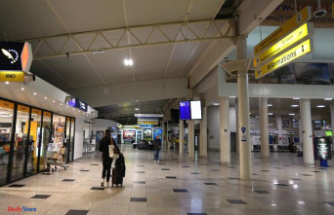After six minutes of lively bidding at Phillips auction house, a Hong Kong-based Asian collector closes an exclusive telephone purchase. He has paid a record amount of 48.8 million Hong Kong dollars (6.2 million US dollars, 5.7 million euros). He is the new owner of a Patek Philippe watch worn by the last emperor of China.
The Patek Imperial, as it is known, was presented by Aisin-Gioro Pu Yi to his Russian interpreter while the sovereign was imprisoned by the Soviet Union, and is one of eight unique known Patek Philippe Reference 96 Quantieme Lune pieces.
For his part, Thomas Perazzi, head of the watch division of the Phillips Asia auction house, declared that this is the highest figure ever achieved for a wristwatch that belonged to an emperor.
Among other models acquired at auctions belonging to emperors, there is a Patek Philippe owned by the last Ethiopian monarch, Haile Selassie, awarded for 2.9 million dollars (2.6 million euros) in 2017.
A Rolex that belonged to the last emperor of Vietnam, Bao Dai, was sold for 5 million dollars (4.6 million euros).
This 2.5cm diameter imperial model in platinum features a dial with Arabic numerals, rose gold hands and a "moon phase" function that shows the visibility of the Moon from Earth at a precise moment.
Part of its internal mechanism dates from 1929, although the Swiss brand did not market the model until 1937. In addition, the scratches on its dial hide a story: according to legend, the sovereign ordered his personal assistant to scratch the varnish on the surface to check if there was platinum underneath.
Although it is unknown how Pu Yi obtained the watch, it is believed that he inherited it from his ancestors and it is documented that it was sold in Paris through a luxury store.
Pu Yi collected several watches, but the most notable was his Patek Philippe Calatrava 96 Quantieme Lune, which he kept during his Soviet imprisonment in the eastern Russian city of Khabarovsk, since he was allowed to have a secret compartment in his suitcase where he carried gold, jewelry and , probably this Patek.
He later gave it as a gift to Georgy Permyakov, a Mandarin expert who served as his Russian translator and tutor during his imprisonment period, at the end of the Japanese occupation of Manchuria after World War II.
The story of Pu Yi, which served as the basis for the Oscar-winning film 'The Last Emperor' by Bernardo Bertolucci, dates back to 1908, when he ascended the throne at just two years old. Less than four years later he was forced to abdicate when a republican revolt overthrew the Qing dynasty, although he was able to continue to reside in the imperial palace in Beijing.
Japan later installed him as Emperor of Manchukuo, in the Manchuria region of northeast China. In World War II and after the defeat of Japan he was captured by Soviet forces and held as a prisoner of war.
According to Phillips' account, he gave the watch to Permyakov in 1950, shortly before his return to China as a prisoner to stand trial for war crimes.
According to the criteria of The Trust Project












